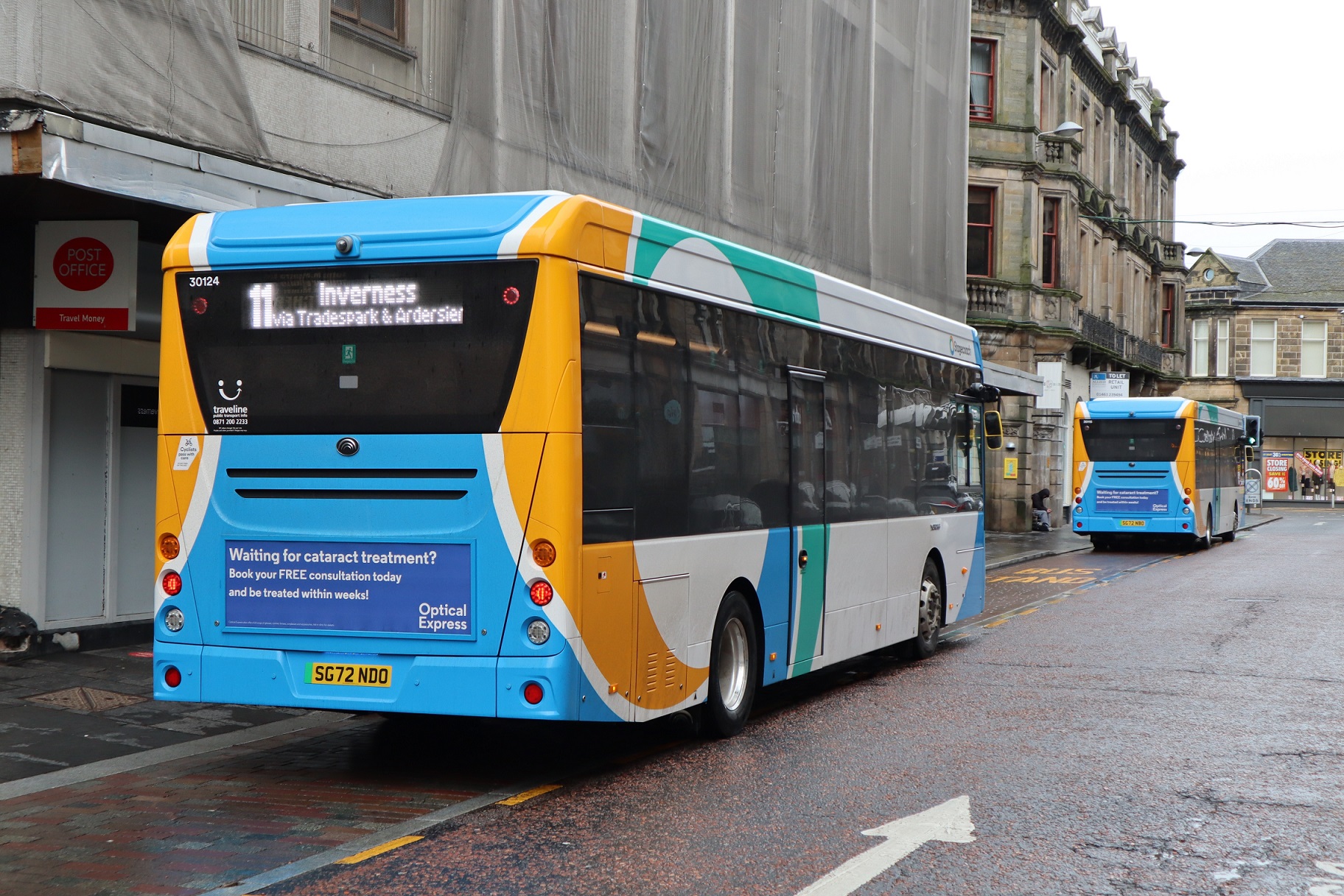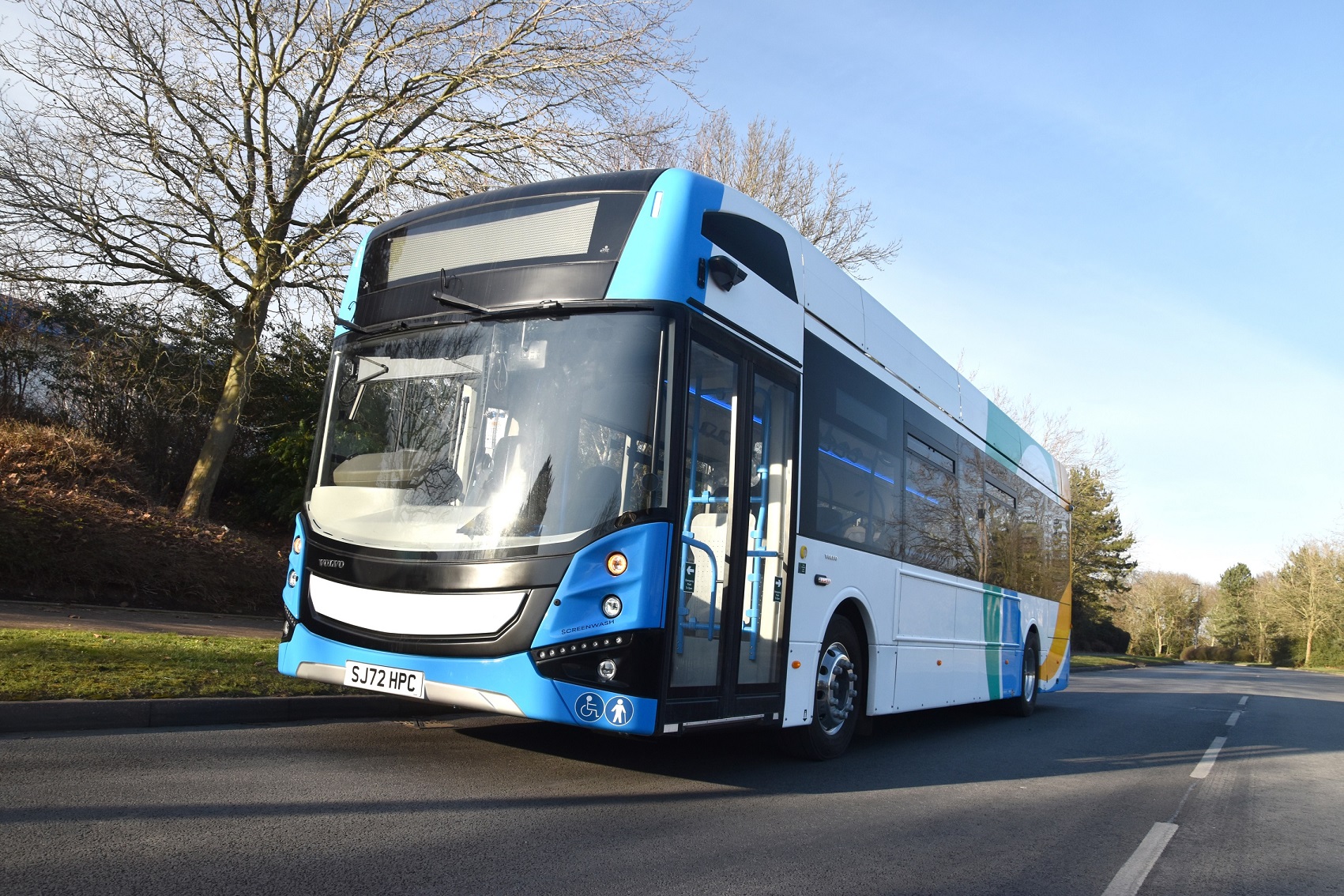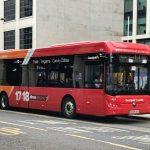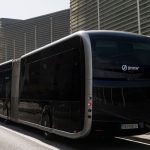When London is removed from considerations, Scotland is the part of the UK where deployment of zero-emission buses is proceeding most rapidly. That is according to Zemo Partnership. It calculates that around 9% of the Scottish bus fleet has transitioned, thanks largely to Scottish Government funding.
With such backing is now coming conversion of significant network chunks. That is the case in Inverness, where Stagecoach Highlands has deployed 25 battery-electric Yutong E10s in a move that the operator claims has delivered the UK’s first fully-electrified city network.
The E10s were supported by the first round of the Scottish Zero Emission Bus challenge fund. £5.8 million from that scheme was received as part of an overall £10.8 million investment in the Inverness project. As with Stagecoach’s business in its entirety, renewable electricity is used for charging.
Displaced by the newcomers were Alexander Dennis Enviro200 and Enviro300 diesels, although in an indication that zero-emission is still neither commercially viable nor operationally appropriate across the piste, Stagecoach Highlands is mid-way through a parallel major investment in diesel buses. However, the Yutongs have settled into their city-based role quickly and competently, says Divisional Traffic Manager Alex Flanagan.
While significant preparatory work was required before the E10 fleet’s arrival from China, they are not the first battery-electric buses to run with Stagecoach in Inverness. That honour goes to an earlier batch of six Optare Solo EVs deployed in 2015. Those buses have since departed the city. Alex notes that battery-electric technology has advanced significantly over the intervening eight years, with the Yutong product being well-established globally and the E10s working ‘out of the box’.

Stagecoach Inverness electric vehicle choice based on feedback
Elsewhere in Scotland, Stagecoach has largely favoured the BYD ADL consortium for battery-electric buses. Meanwhile, at around the same time that the Inverness E10s were entering service, the first of a batch of Volvo BZLs were being put to work in Ayrshire. What was the reasoning for going with Yutong in Inverness for the first volume deployment of the marque within Stagecoach’s business?
“It was largely due to the range and the feedback on reliability that we received,” Alex continues. “We spoke to McGill’s Buses and asked how it had found its Yutongs. Additionally, the delivery schedule offered by Pelican Bus and Coach was attractive.”
The E10s were driven from Pelican’s Yorkshire base to Inverness, stopping once to charge. They are finished to Stagecoach’s standard interior specification. But unlike some other Yutong bus deliveries over recent months, they have conventional mirrors, and not the rear-view camera package.
Stagecoach previously tried a hydrogen fuel cell-electric demonstrator in Inverness that came with cameras. Alex says that under the operating circumstances at the depot, the business is not yet convinced that cameras are ideal. A rare circumstance is in play in Inverness; besides buses, it has a coach fleet, all members of which are mirror-equipped. Coach drivers progress from buses and Alex believes that a commonality in rear-view approach is beneficial under that arrangement.
Drivers like move to battery-electric, Stagecoach finds
Drivers have expressed a like for the battery-electric buses. “It makes a difference to them to be allocated one,” says Alex. “Drivers know that there will be no issues, that they will be warm, and that passengers appreciate the new fleet.”

Like other operators, Stagecoach has found in recent months that previous pressure on driver resource has eased somewhat in Inverness. January and February saw what Alex describes as “a significant spike” in applications. It is difficult to ascertain what is leading that, as it is for the uptick in the number of young people seeking to join, but both are welcomed. Presence of electric buses could be a factor, he continues.
From an operational perspective, the new buses are performing well. Depot charging infrastructure was installed by a local contractor and support has been provided by Pelican in the service deployment of the fleet. The first E10 leaves at around 0445hrs and they work until the close of service. Examples have been trialled on rural routes to locations such as the Black Isle, Dingwall and Nairn, albeit not for full duties; however, when utilised there, they performed well.
Engineering training is key to successful deployment
Charging time is around three hours. When combined with a range that quickly proved to be higher than anticipated, downtime for battery replenishment has been lower than expected, says Stagecoach Highlands Chief Engineer Davie Simpson.
At the time that routeone visited Inverness, the buses were still very new and hence the operator’s engineering staff had seen little of them for routine work, although one had been damaged in a road traffic accident. A training programme for engineers was still being carried out; Pelican has delivered some of that, while other aspects are provided by a third party.

An early part of vehicle acquaintance for engineers is Faraday training, which gives them a basic understanding of electrics. Once they have passed that, they are sent to GTG Training in Glasgow for a three-day electric vehicle course. “Both parts need to be passed before we allow staff to carry out work on the buses. That was pre-empted by more than half of our engineers being sent on the courses prior to the Yutongs arriving,” continues Davie.
‘A lot less to go wrong’ in an electric bus
To support the buses, Stagecoach has invested in specialised tools and commissioned an electric vehicle tooling station. Davie adds that staff appreciate the layout of the vehicles. “Looking around them, it is clear that thought has been put into how an engineer carries out their work. That includes simple things such as having inspection hatches inside the bus to allow access to the top of suspension components.”
As is the accepted position with battery- and hydrogen fuel cell-electric buses, Stagecoach expects a less time-intensive maintenance requirement for the E10s than for diesel buses. “There is a lot less to go wrong from an engineer’s point of view,” Davie continues.
“That sounds strange given the technology involved, but when underneath one of the buses I can see that there is nothing there except for a front and a rear axle. Because of that, the majority of work can be completed from the top, on hardstanding, reducing our need for pits.”
As an example of expected savings, Davie points to foundation brakes and the use of regeneration. In a diesel bus, pads are changed at between nine and 12 months. On the battery-electrics, that interval is already projected to be two years, “or possibly longer,” he observes. The conclusion from both engineering and operations is clear: Zero-emission is a positive for bus, and operators are now in a position to roll it out on a wholesale basis.
ScotZEB: Leading the way in zero-emission bus adoption
The first round of the Scottish Zero Emission Bus challenge fund (ScotZEB) was lauded for fostering the rapid delivery of battery-electric buses into Scotland’s fleets. A second round, which is planned to focus on smaller and more rural operators and capture coaches in addition to buses, is expected to open soon.
ScotZEB sits in contrast to the Zero Emission Bus Regional Areas scheme in England. There, progress is slow, largely thanks to use of a more complicated structure where bids are led by local authorities. ScotZEB, meanwhile, was set out specifically to support a “swift transition to zero-emission vehicles and infrastructure,” according to guidance. The difference between the two approaches was highlighted by the Transport Committee in late March.

In its report Implementation of the National Bus Strategy, the Committee noted that ScotZEB cuts out “the middleman” and has allowed Scotland to “power ahead with its bus decarbonisation plans.” Zemo Partnership’s calculations on orders placed support that conclusion.
Stagecoach was a major beneficiary of ScotZEB1. In addition to its work in Inverness, funding was secured by the group’s Bluebird, Scotland East and Scotland West subsidiaries. Significant support for zero-emission was also gained by Stagecoach via the earlier Scottish Ultra Low Emission Bus Scheme.
In an indicator of the pace of deliveries from ScotZEB1, the mechanism closed to applications on 29 November 2021. Multiple fleets that it has part-funded are in or entering service. For ZEBRA, some orders are still yet to be placed, and only a small number of buses supported by the scheme have been delivered.



























